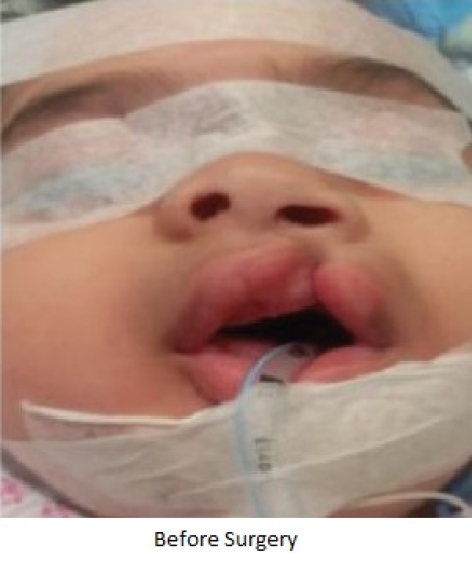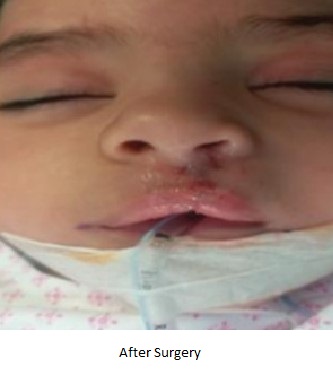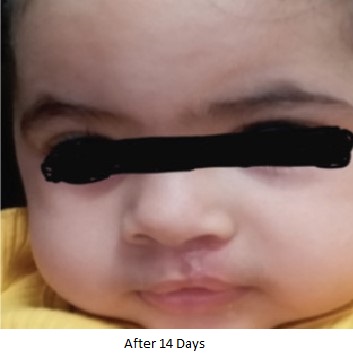CASE OF THE WEEK – “Special case of Cleft lip repair in a 9 months old baby girl” by Dr. Wissam Altamr, Specialist, Paediatric Surgery at NMC Royal Hospital, Sharjah

Special case of Cleft lip repair in a 9 months old baby girl
9 months old female was presented by her mother in the Paediatric Surgery Clinic with an isolated cleft lip. The parents of the baby did not opt for the surgery till this age due to Covid-19 pandemic. The baby was advised for the surgery within (8-12) weeks of birth.
Upon examination, Dr. Wissam Altamr noted that she had unilateral (left) complete cleft lip without cleft palate. The treatment plan and the surgery was explained to her mother & Dr. Ayman Mustafa, Consultant Anaesthesiology provided an anesthesia consultation.
Dr. Wissam Altamr performed repair of Cleft Lip on the patient and the parents of the baby are very satisfied and happy. The patient was discharged after 2 days in good condition and she visited for follow-up after 7 days. The patient was tolerating feeding and the surgery site of the baby (upper lip) is cosmetically perfect.
Kindly find the below images of the baby:


Definition of Cleft Lip:
Cleft lip (CL) is a common congenital anomaly that is caused by defective fusion of the medial nasal and maxillary processes during embryologic development. Approximately 80% of cases are unilateral and 20% are bilateral. Cleft palate (CP), which results from failure of the lateral palatal shelves to fuse, often occurs in conjunction with CL, although it also may develop as an isolated defect.
The frequency of CL ± CP varies considerably among different racial/ethnic groups. Among whites, the frequency is estimated at 1 per every 700 to 1000 births. The prevalence in blacks is much lower, with a rate of 0.4 cases per 1000 births. In contrast, the rate in Asian populations is about 1.5 times that seen in whites. The highest rate occurs in Native Americans, with a frequency of 3.6 per 1000 births. CL ± CP is more common in males.
Cause of cleft lip:
Orofacial clefting is seen with greater frequency in a variety of specific genetic syndromes, although more often it occurs in a sporadic fashion due to a combination of environmental and genetic factors. Factors known to increase the risk for clefts include maternal smoking, alcohol consumption, and phenytoin usage.
Treatment for cleft lip:
Treatment may require multiple surgeries, with repair of CL usually accomplished around 2 to 3 months after birth and surgical correction of CP undertaken between 6 and 12 months of life.



